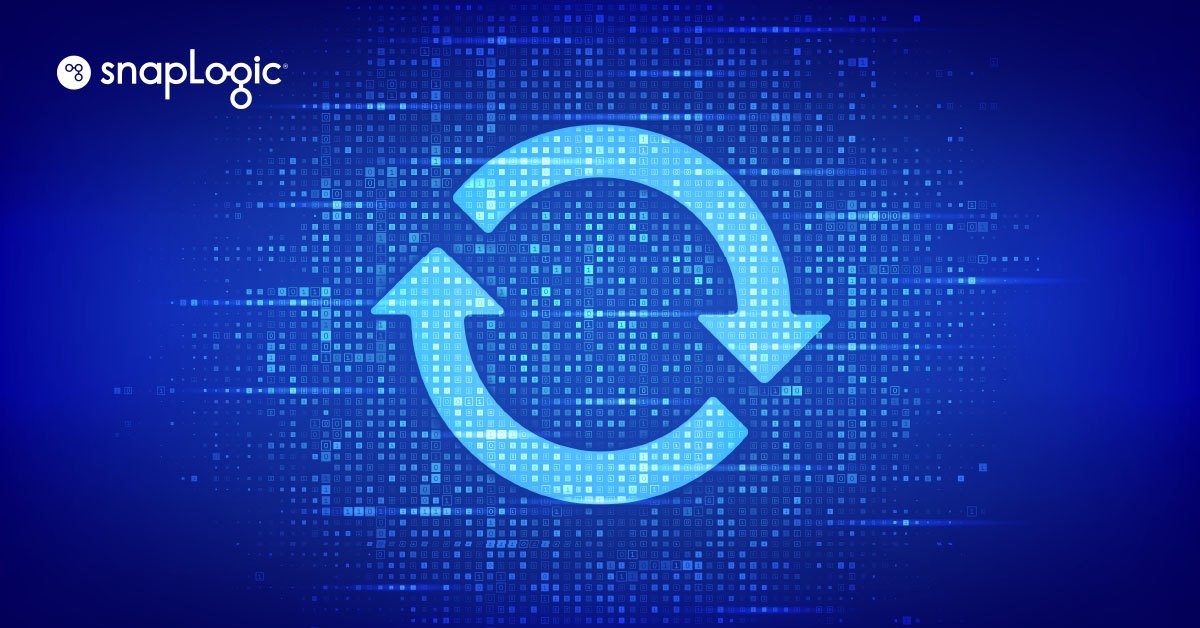Data is everywhere — so much so that workers are overwhelmed by information overload. And they’re overwhelmed by the number of places they have to go to get the right information when they need it.
Team members need to frequently update each other with meetings, emails, and other exchanges of information to stay in sync and work effectively toward the same goal. Tools and applications are the same way: they need to keep each other up to date on the latest changes or they’ll waste employees’ time.
The ongoing process of synchronizing data is critical for keeping tools and applications operating effectively by making sure data is consistent everywhere. If something changes, the whole system needs to know it.
What is data synchronization?
Synchronizing data (or data synchronization) is the process of updating data across multiple locations simultaneously. Every day, we integrate more tools into our workflows and add data to more processes. We’re connecting more and more. That means we need all of these connections to communicate effectively by synchronizing their data.
Beyond keeping data consistent, synchronization also involves checking and cleaning up data.
Say you have two different systems that contain customer contact information, but one system uses a different data format than the other. When you synchronize the data, the system that uses a different data format can clean up the data to fit the format of the other system. This step could involve removing any invalid characters, standardizing the formatting of phone numbers and addresses, and ensuring that all fields are filled out correctly.
Two types of data synchronization
There are two main types of data synchronization: unidirectional and bidirectional — also called “one-way” and “two-way” — based on whether information flows in one direction or two.
1. Unidirectional
In one-way data synchronization, one tool relays information to another. The information always flows one way, from the sender tool (or tools) to the receiver tool, and it never goes the other way.
Data that’s copied from a production database over to a reporting database, for instance, would be an example of unidirectional data synchronization. Because the data is being copied to be analyzed — and no information from the reporting database is sent to the production database — there only needs to be a one-way flow of information.
2. Bidirectional
In this data synchronization type, data is updated in both locations to keep all information the same. The changes can come from either source.
Bidirectional data synchronization occurs when you sync a local database with a cloud-based database. File storage systems that automatically update a local drive to the cloud drive (like Dropbox, Google Docs, etc.) are examples of two-way data synchronizing. Both the local and cloud systems reflect the updates.
Advantages and uses of data synchronization
Data synchronization can give everyone a single source of truth while also allowing for changes and updates. Before tools that could synchronize data automatically, data professionals had to manually copy, check, and update data. Anytime any piece of information needed to be changed, removed, or added, it had to be done by hand — a process that was time-consuming and tedious.
But data synchronization changed that. With data synchronization, organizations can keep data more accurate and useful.
Improves efficiency
Keeping information up to date everywhere through data synchronization helps everything run smoothly by keeping everyone on the same page.
Say your organization’s sales team uses a CRM platform to manage customer data, and the finance team uses a separate accounting tool to track invoices. If the company is synchronizing data across departments, the finance team’s contact information for the customer will automatically update. But if they’re not synchronizing data, the finance team could send invoices to the wrong email address — which could cause significant delays in the payment of those invoices.
Increases security
Updating the data across all systems when one system is updated facilitates collaboration and coordination among teams, improving security.
Let’s say that a customer support team and a security team both use a CRM tool to manage customer data, but the security team also uses a separate tool to manage access control. If a customer contacts support to report an account takeover issue, the support team might find out before the security team.
If the data is not synchronized between systems, the security team might not be aware of the issue and not take any action — leaving the customer’s account vulnerable. But if the data is synchronized, the security team would receive automatic updates from the CRM tool and be able to take action immediately to secure the account.
Offers data backups
Power outages, hardware failures, or even a small bug can cause data to become out of sync across multiple systems. This can result in significant disruptions as employees may not have access to the most up-to-date information. Decisions may be made based on incomplete or inaccurate data. In some cases, it may be necessary to halt work until the data is synchronized again, which can result in lost productivity and revenue.
But if your data is synchronized across all platforms, you can often find the same information in another tool. Let’s say your organization uses a CRM tool to manage customer data and a separate tool for accounting and invoicing. One day, the CRM tool experiences a power outage and goes down for several hours.
During that time, the accounting team sends out several invoices to customers, unaware that some of the customer data in the CRM tool was updated just before the outage. If the two tools were not synchronized, the accounting team may have sent invoices to the wrong email addresses or physical addresses — causing significant delays in payment and potentially damaging the company’s reputation.
How do you synchronize data?
Data synchronization can happen through manual updates, but they’re typically not feasible, given the pace of incoming data for most companies. For this reason, many desktop or mobile-device based business applications have built-in data syncing capabilities. For enterprise data platforms, or IT systems, however, where data may or may not be driven by an application, data changes, exchanges, or movement between these enterprise data platforms would be best synchronized with an iPaaS (integration platform as a service) that incorporates automated ingestion and change data capture, like SnapLogic AutoSync.
With instant pipelines for popular workflows, beginning with Salesforce to Snowflake, and a platform that anyone on your team can learn to use, synchronizing data becomes a set-it-and-forget-it task. SnapLogic AutoSync can get you up and running in just minutes. All you have to do is state the business purpose, then specify the destination and data sources.
To learn more about synchronizing data and other forms of data integration, check out The Enterprise Guide to Modern Data Integration.









